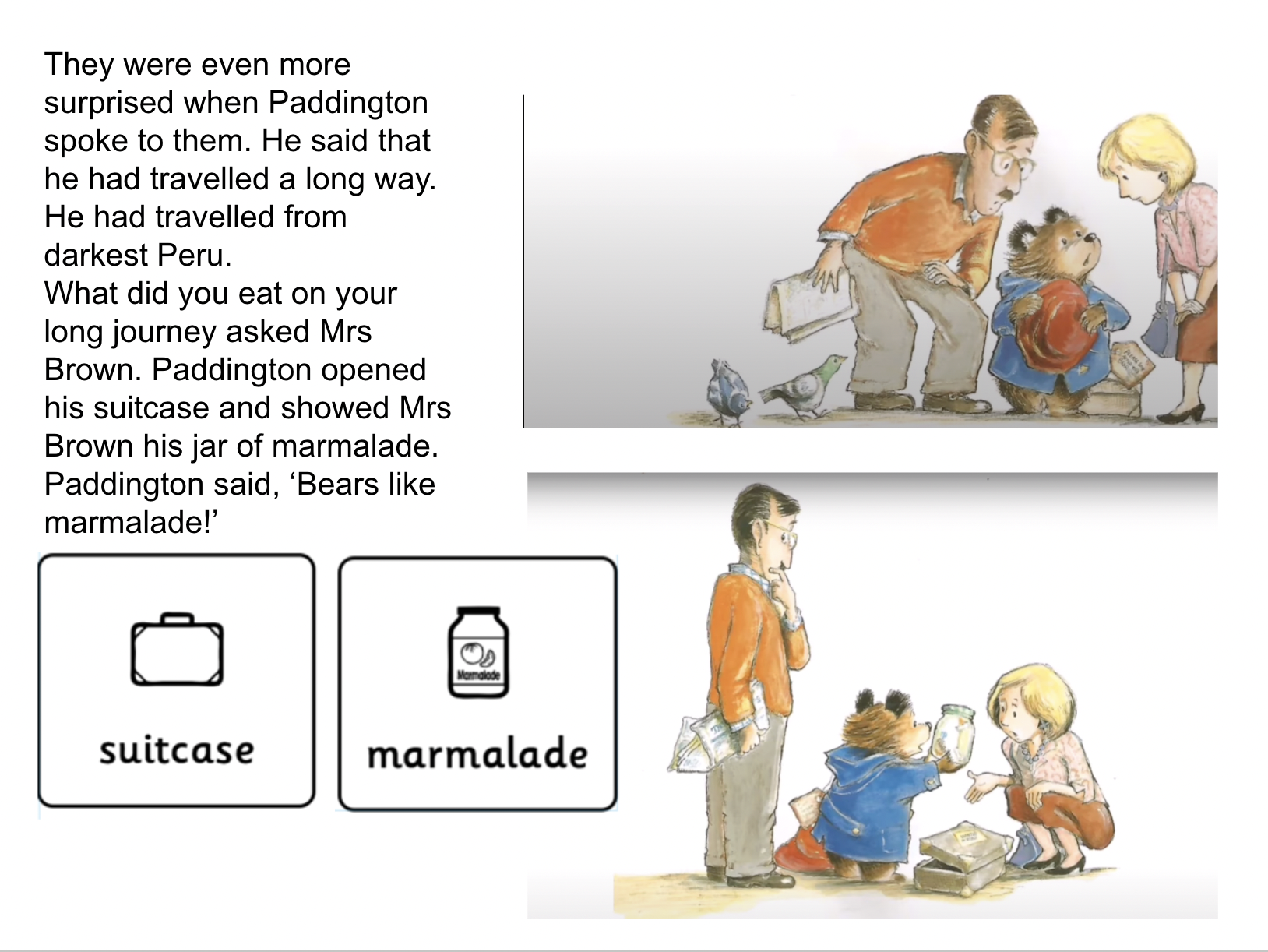Sensory Stories
Sensory Stories are a fantastic way to engage young people with complex special needs. They can become the favourite part of the day not only for the children but also for the adults facilitating the story too.
I told my first Sensory Story while working with a group of students with PMLD (Profound and Multiple Learning Difficulties) at Talbot Specialist School in Sheffield 2019. I drew on my early Artist Working in Special Education Training and also my experience of working with the blind and visually impaired learners. This was invaluable, especially as three of the students in this group had no vision at all.
Over the years I have built up an an impressive library of Sensory Stories and have thoroughly enjoyed sharing my skills in this area with both my classroom support staff and also visitors to the school.
I have simplified stories such as Roald Dahl’s ‘George’s Marvellous Medicine’ and even rewritten stories if need be.
Sourcing appropriate props is both fun and a creative challenge. I always try to ensure that I can incorporate props that cater for my students’ sensory tolerences, needs and interests.
For example the props that I use when telling my Sensory Story version in Eric Carle’s ‘The Tiny Seed’ includes; fans, ice, fake snow, sand, hot water bottles, water poured from a watering can, a feather boa, bird seeds sprinkled into trays, fabric flowers and floral aromatherapy oils.
Over the years I have built up an an impressive library of Sensory Stories and have thoroughly enjoyed sharing my skills in this area with both my classroom support staff and also visitors to the school.
I have simplified stories such as Roald Dahl’s ‘George’s Marvellous Medicine’ and even rewritten stories if need be.
Sourcing appropriate props is both fun and a creative challenge. I always try to ensure that I can incorporate props that cater for my students’ sensory tolerences, needs and interests.
For example the props that I use when telling my Sensory Story version in Eric Carle’s ‘The Tiny Seed’ includes; fans, ice, fake snow, sand, hot water bottles, water poured from a watering can, a feather boa, bird seeds sprinkled into trays, fabric flowers and floral aromatherapy oils.

I made differentiated symbilised versions of this story
![]() A sparkly mermaid tail to dress up in; a small mermaid doll to handle and a laminated symbolised book version with added glitter to give the page some textural interest
A sparkly mermaid tail to dress up in; a small mermaid doll to handle and a laminated symbolised book version with added glitter to give the page some textural interest
 A sparkly mermaid tail to dress up in; a small mermaid doll to handle and a laminated symbolised book version with added glitter to give the page some textural interest
A sparkly mermaid tail to dress up in; a small mermaid doll to handle and a laminated symbolised book version with added glitter to give the page some textural interest Sensory Stories have simplified language and focus more on how the story can be experienced through the senses. However, the storyteller can also make use of their voice to add drama, excitement and to build anticipation.

We made laminated books with symbols to match key words in the story.

This Granny had a helium balloon for her head: In our classroom telling of George’s Marvellous Medicine, her ribbon neck grew and grew until her head touched the ceiling!
 This well known story really came to life with our props. We had trays of water with toy boats, toy fish in mini-frying pans and a big swishy swimming noodle was decorated to become jungle vines.
This well known story really came to life with our props. We had trays of water with toy boats, toy fish in mini-frying pans and a big swishy swimming noodle was decorated to become jungle vines. I use whichever symbols the setting uses and that the students are familiar with. These ones are Makaton symbols
I use whichever symbols the setting uses and that the students are familiar with. These ones are Makaton symbols In our art lessons we made peg dolls. Winding the wool was great for developing gross motor skills The peg dolls became props for the story ‘Where the Forest Meets the Sea’.
In our art lessons we made peg dolls. Winding the wool was great for developing gross motor skills The peg dolls became props for the story ‘Where the Forest Meets the Sea’. Different ways of experiencing a bird - feather boa, chunky bird shaped clip and a specially recorded sound button.
Different ways of experiencing a bird - feather boa, chunky bird shaped clip and a specially recorded sound button.

We obviously had a cute brown suitcase with ridged tactile jars of marmalade inside. During the story the students tasted lime marmalade and orange marmalade. Things got sticky in the classroom!
